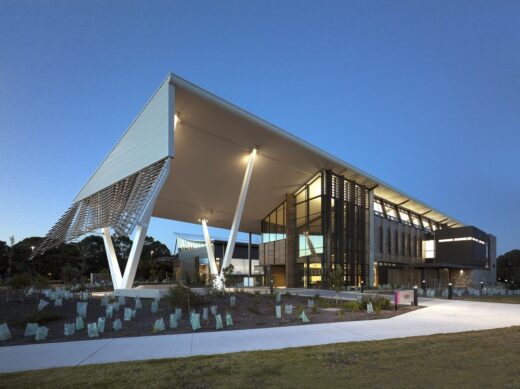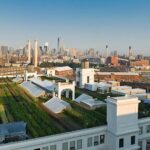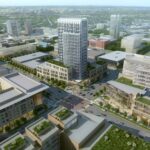Universal buildings for a futureproof city news, City of London homes, Futureproofing cities, Regenerative building
Universal Buildings for a futureproof city article
7 November 2022
Article written by John Badman, principal at CallisonRTKL for e-architect
Creating Universal Buildings for a futureproof city
John Badman, principal, CallisonRTKL:

photo courtesy of architects office
Universal Buildings for a futureproof city – evolution
A lot of debates have taken place recently about futureproofing our cities. London has been top of the agenda for this for quite some time.
Indeed, last year the City of London unveiled plans to create at least 1500 new homes by repurposing some offices and other buildings, as it adapts to shifting requirements driven, in part, by the pandemic. This evolution is critical to the success of the capital – we can make this happen, and we should make this happen now. One solution for this going forwards is the concept of the Universal Building, a building that, when designed properly up front, can regenerate over time – adapting to the needs of today as well as the foreseen needs of tomorrow. A benchmark that can transition between parking, residential, workplace, hospitality and senior living – with common building systems and structures positioned to meet changing demands.
The regenerative building revaluates the concept of the centre core building, from the floor plates, MEP and columns to technology and the podium and parking structure – to deliver the most resilient, cost-effective and sustainable solution.
The changing landscape
The last 18 months has proven how important it is for investors, developers, owners and designers to quickly pivot in a way that brings the most return on investment, a sustainable building solution and a socially safe environment. What has previously been an occupied office building, residential tower, hotel or retail plaza could now look completely different. Instead of demolishing (with the accompanying costs and environmental impacts associated), perhaps consider how to re-adapt the building.
While maintaining the standard floor-to-floor heights, floor plates and MEP are crucial to regenerative buildings. Even though a Universal Building can solve many arising issues, there are attributes to the systems that may be beyond the typical typology norms relative to floor-to-floor heights, MEP systems and floor plate sizes. Justifying these anomalies rests in the long-term upside of owning a building that cannot become a “stranded asset” – one, whether a single asset or one in a portfolio of assets, that no longer meets the needs of growing ESG-led investments.
Looking at high density urban cities, car parks often sit on valuable land that could generate a larger return on investment when redeveloped to meet changing requirements. With that in mind, the need for vehicles is changing, which is why a regenerative building concept makes complete sense. Ground-level parking spaces could be transformed into retail store fronts, whereas mid-level parking spaces could be transformed into office, residential or hotel spaces. Parking levels can even be reconfigured to include parks and green spaces to encourage wellness.
Our sustainable future
The most sustainable building out there is one that doesn’t have to be built from the ground up, as building reuse almost always yields fewer environmental impacts than equivalent to new construction. The number of environmental savings is varied based on building type, location and assumed level of energy efficiency. Savings from reuse are up to 46 percent over new construction when comparing buildings with the same energy performance level.
A good design company challenges the status quo, a great one changes the way we live for the better. We know that, through regenerative building, we can play a key role in increasing resiliency, supporting sustainability and strengthening our communities.
John Badman is a principal at CallisonRTKL
Universal buildings for a futureproof city image / information received 071122
Sustainable Architecture News
Sustainable Building Design
Sustainable Buildings Research Centre, University of Wollongong, Australia – engineered by Cundall:

photo © Richard Glover / Matt Estherby
Sustainable Building News
Climate and biodiversity emergency
Climate and Biodiversity Emergency News: Landscape Architects
Eco Architecture
Contemporary Green Architecture Design
Buildings / photos for the Universal buildings for a futureproof city – Sustainable Building News page welcome




